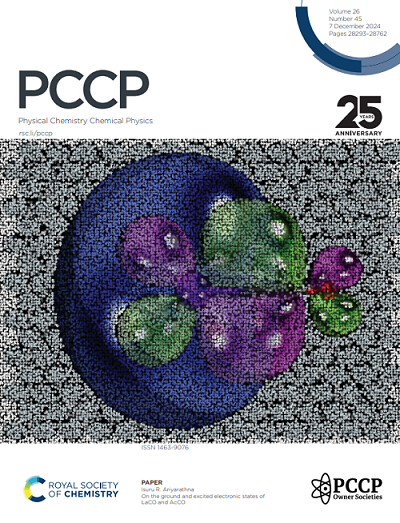Estimating Advancing and Receding Contact Angles for Pure and Mixed Liquids on Smooth Solid Surfaces using PCP-SAFT Equation of State
IF 2.9
3区 化学
Q3 CHEMISTRY, PHYSICAL
引用次数: 0
Abstract
Contact angle is an important measure of wetting in systems involving liquid-solid interfaces. This study focuses on estimating advancing and receding contact angles of pure and mixed liquids on smooth solid surfaces using perturbed-chain polar statistical associating fluid theory equation of state (PCP-SAFT EoS). For the receding contact angle, we propose a model in which the surface energy of solid containing a liquid film is approximated by the geometrical average of surface energies of the pure solid and liquid. The PCP-SAFT model is used to calculate the ratio of dispersion-to-total surface energy for diverse pure and mixed liquids. The results are validated against 104 experimental data points for advancing and receding contact angles, showing an average absolute relative deviation (AARD) of 7.4% for advancing angles and 10.6% for receding angles. In the contact angle models, there is an α-parameter in power term which is 0.75 and 0.5 for the advancing and receding contact angles, respectively. To assess the reliability of this α-parameter, we varied it and optimized it using experimental data. The optimized power term was found to be 0.74 for advancing and 0.48 for receding contact angle, and the AARD values slightly reduced to 7.2% and 10.5%, respectively. The optimized model parameter values are remarkably close to those based on the model assumptions (0.75 for advancing and 0.5 for receding), which validates the assumed values. The contact angle model combined with the PCP-SAFT framework allowed to accurately predict the advancing and receding contact angles of binary mixtures.求助全文
约1分钟内获得全文
求助全文
来源期刊

Physical Chemistry Chemical Physics
化学-物理:原子、分子和化学物理
CiteScore
5.50
自引率
9.10%
发文量
2675
审稿时长
2.0 months
期刊介绍:
Physical Chemistry Chemical Physics (PCCP) is an international journal co-owned by 19 physical chemistry and physics societies from around the world. This journal publishes original, cutting-edge research in physical chemistry, chemical physics and biophysical chemistry. To be suitable for publication in PCCP, articles must include significant innovation and/or insight into physical chemistry; this is the most important criterion that reviewers and Editors will judge against when evaluating submissions.
The journal has a broad scope and welcomes contributions spanning experiment, theory, computation and data science. Topical coverage includes spectroscopy, dynamics, kinetics, statistical mechanics, thermodynamics, electrochemistry, catalysis, surface science, quantum mechanics, quantum computing and machine learning. Interdisciplinary research areas such as polymers and soft matter, materials, nanoscience, energy, surfaces/interfaces, and biophysical chemistry are welcomed if they demonstrate significant innovation and/or insight into physical chemistry. Joined experimental/theoretical studies are particularly appreciated when complementary and based on up-to-date approaches.
 求助内容:
求助内容: 应助结果提醒方式:
应助结果提醒方式:


